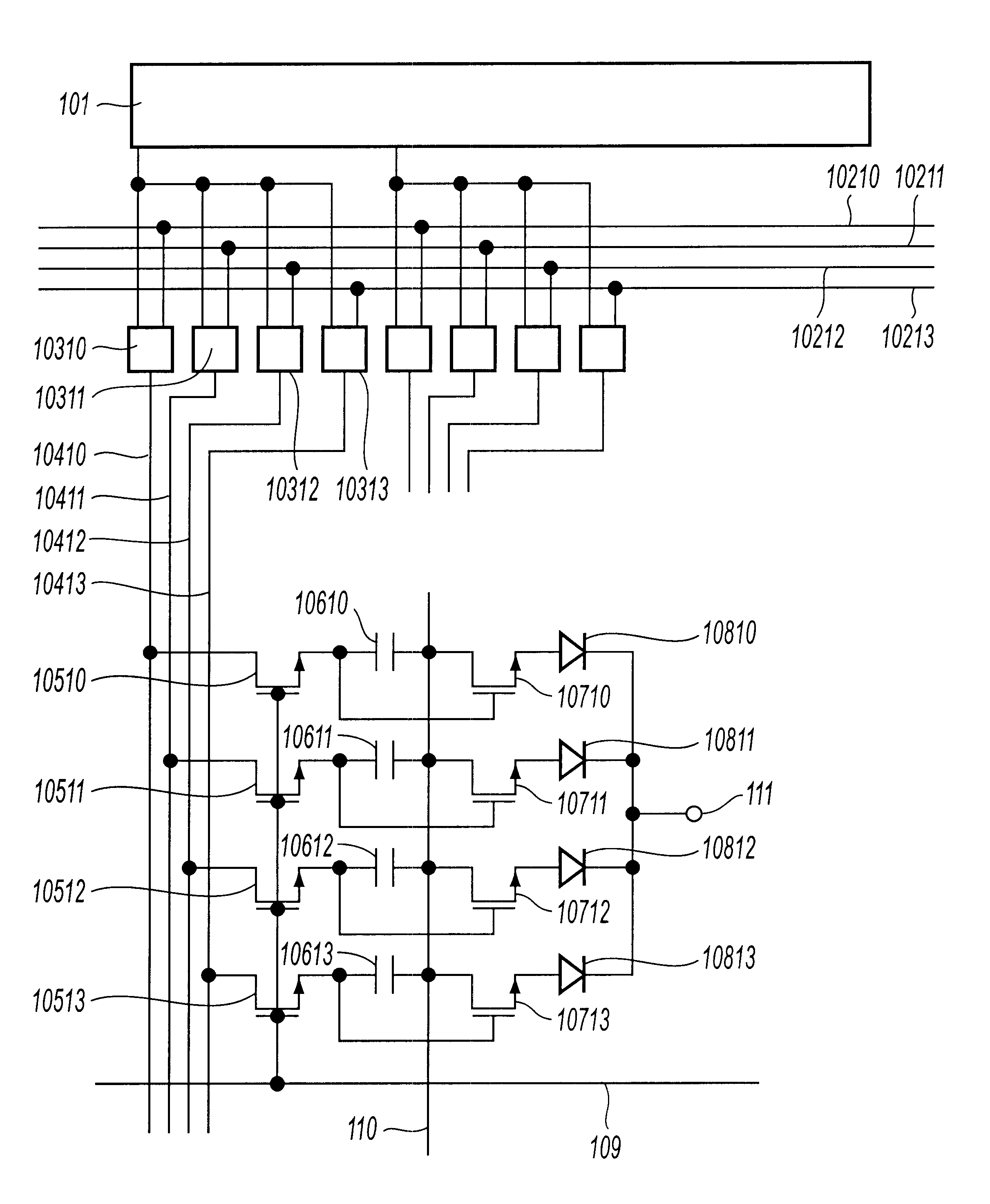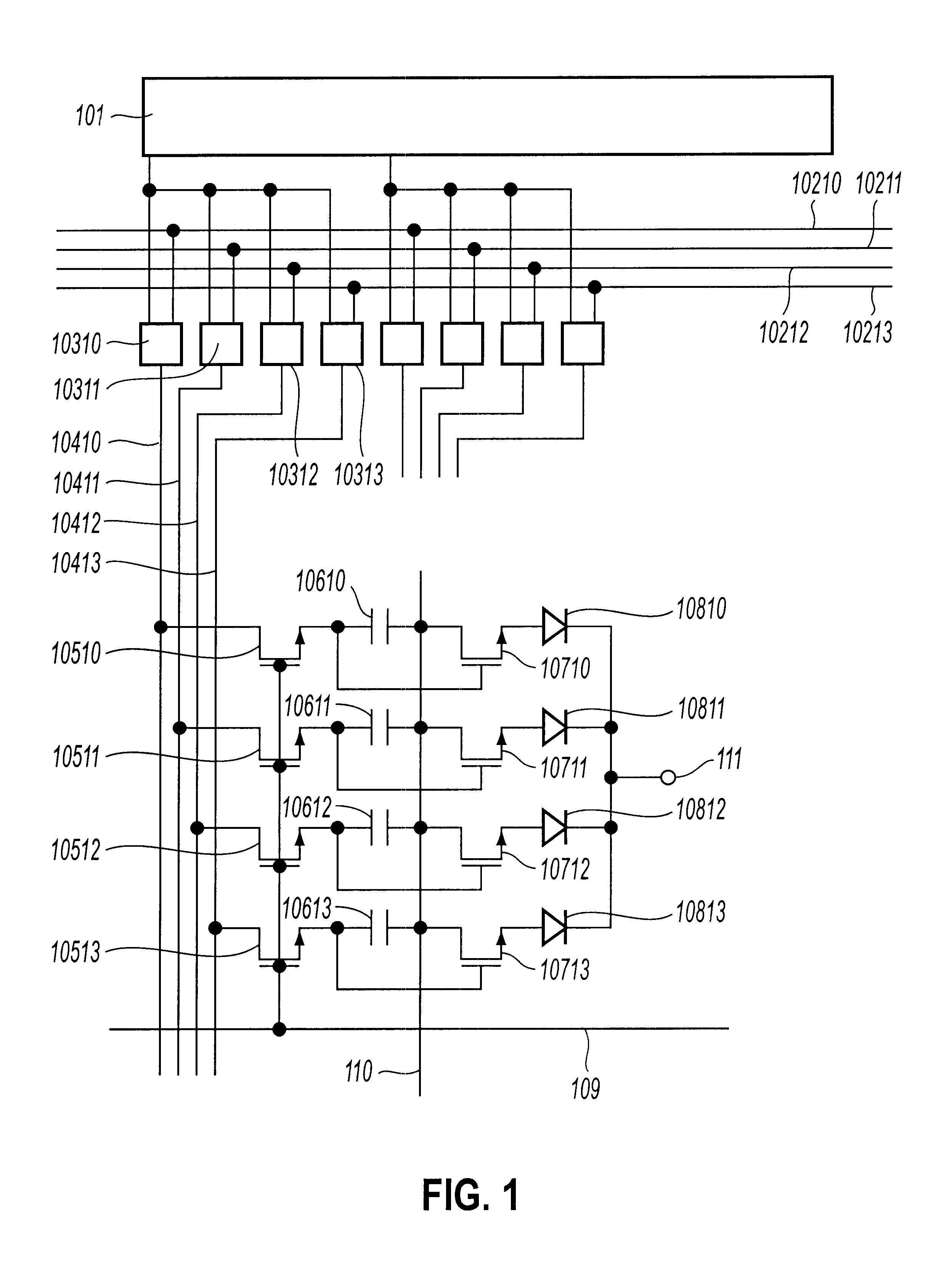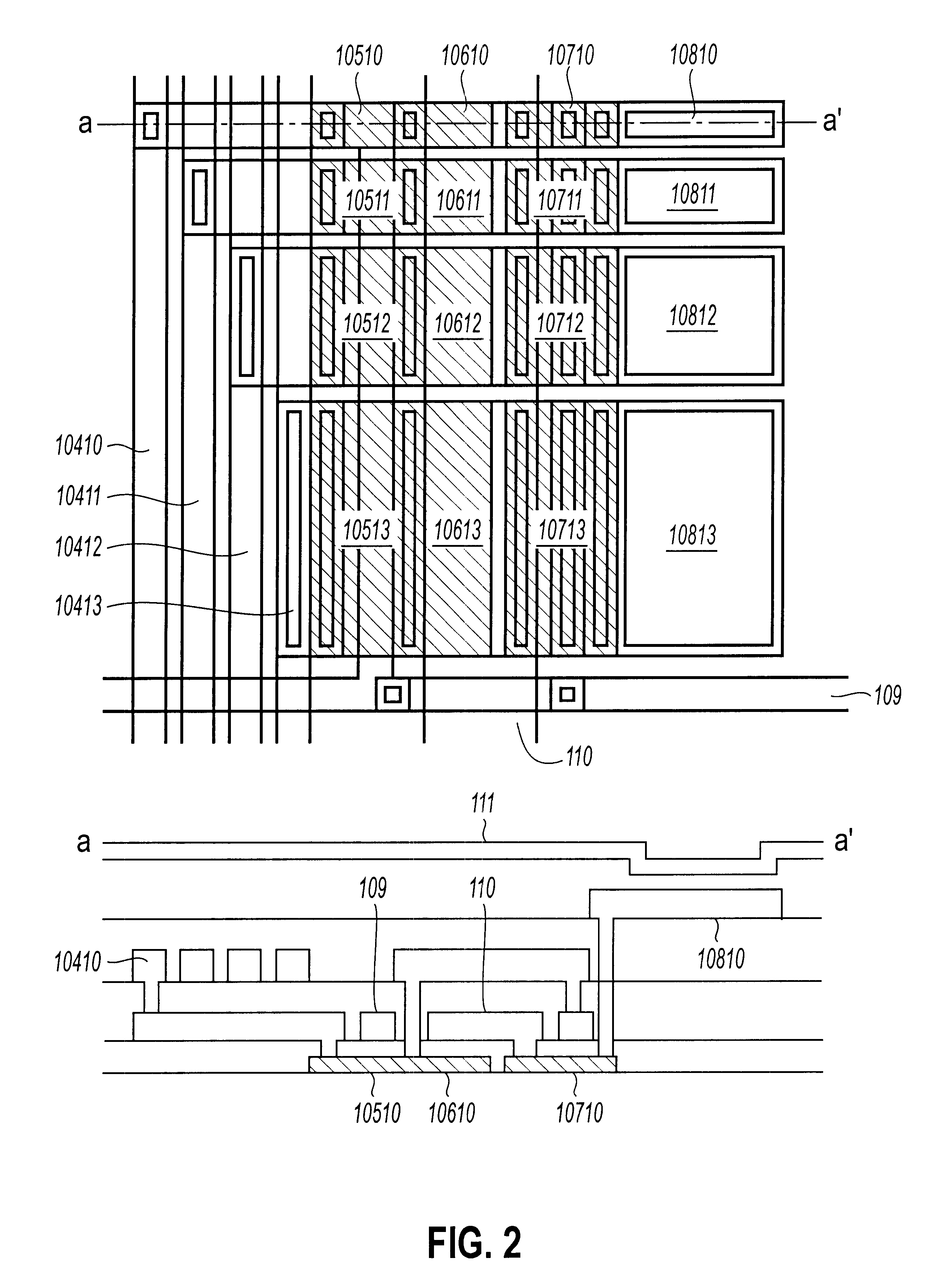Display device
a technology of display device and display angle, which is applied in the direction of static indicating device, identification means, instruments, etc., can solve the problem of limited viewing angle range of liquid crystal display devi
- Summary
- Abstract
- Description
- Claims
- Application Information
AI Technical Summary
Problems solved by technology
Method used
Image
Examples
first embodiment
(First Embodiment)
FIG. 1 is an equivalent circuit diagram of a TFT-OELD of a first embodiment in accordance with the present invention. Although only one pixel is shown in the drawing, there are many pixels arranged in a plurality of rows and a plurality of columns in an actual device.
When a pulse is output from a shift register 101, digital signals of digital signal supply lines 10210 through 10213 of zero-th through third bits are transmitted to source lines 10410 through 10413 via transmission switches 10310 through 10313 of the zero-th through third bits. In other words, the digital signals are transmitted to each pixel. For a gate line 109 that has been selected at this time, the digital signals are respectively transmitted to retention capacitors 10610 through 10613 of the zero-th through third bits via switching transistors 10510 through 10513 of the zero-th through third bits, respectively. Current transistors 10710 through 10713, which are thin film transistors, and organic...
second example
(Second Example)
FIG. 4 is an equivalent circuit diagram of a TFT-OELD of a second embodiment in accordance with the present invention.
The operations, functions, and advantages of the TFT-OELD of this embodiment are almost identical to those of the first embodiment. In this embodiment, however, a gate line 109 is divided into a gate line 1090 for lower-order bits that is assigned the functions of zero-th and first bits and a gate line 1091 for higher-order bits that is assigned the functions of second and third bits. This makes it possible to reduce the number of the digital supply lines and the number of the transmission switches and source lines per column from four to two. However, the frequencies of the scanning signals of the gate lines, the pulses of the shift register, and the digital signals will be doubled.
application example
(Application Example)
The present invention is intended to reduce the nonuniformity in the luminous intensity of luminescent elements caused by the nonuniformity in the conductance of transistors in a current luminescent display element and therefore it is intrinsically different from the area gray scale method of the liquid crystal display element mentioned in "Background Art." In fact, current luminescent display elements do not even need to have different areas as long as they have different luminous intensity levels. Their structures, however, have similar aspects. Therefore, many embodiments disclosed in relation to the area gray scale method of liquid crystal display elements can be applied to the gray scale method in accordance with the present invention, and the similar advantages to those of the disclosed embodiments can be expected.
Industrial Applicability
Having the advantages described above, the present invention is ideally used with a display device equipped with element...
PUM
 Login to View More
Login to View More Abstract
Description
Claims
Application Information
 Login to View More
Login to View More - R&D
- Intellectual Property
- Life Sciences
- Materials
- Tech Scout
- Unparalleled Data Quality
- Higher Quality Content
- 60% Fewer Hallucinations
Browse by: Latest US Patents, China's latest patents, Technical Efficacy Thesaurus, Application Domain, Technology Topic, Popular Technical Reports.
© 2025 PatSnap. All rights reserved.Legal|Privacy policy|Modern Slavery Act Transparency Statement|Sitemap|About US| Contact US: help@patsnap.com



